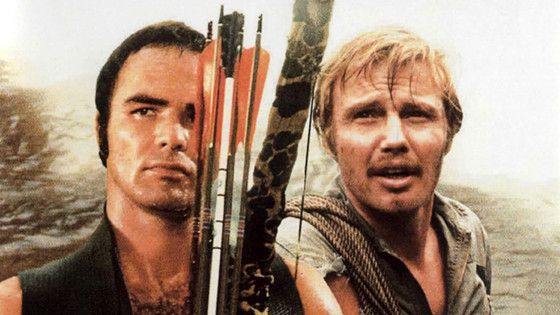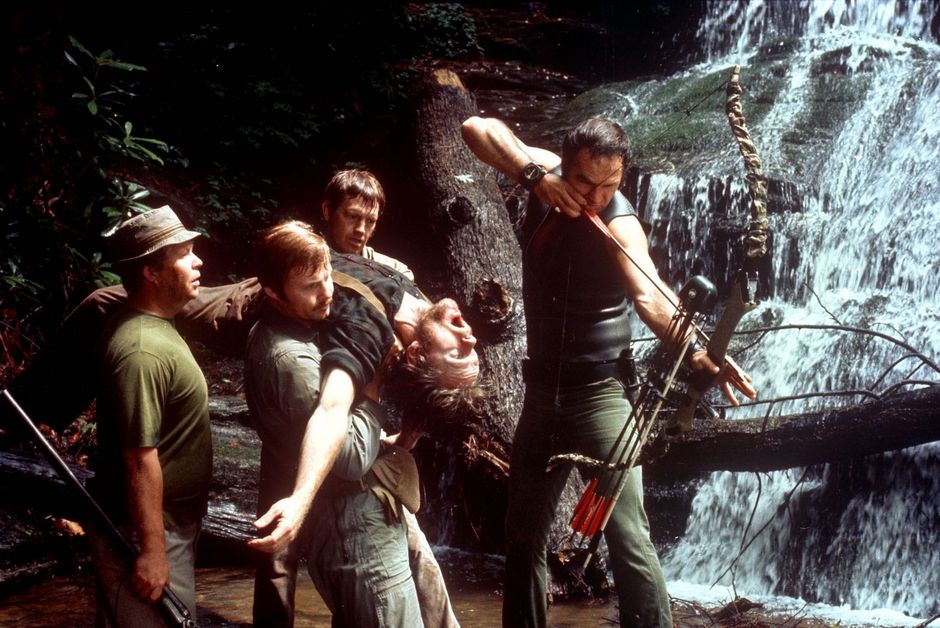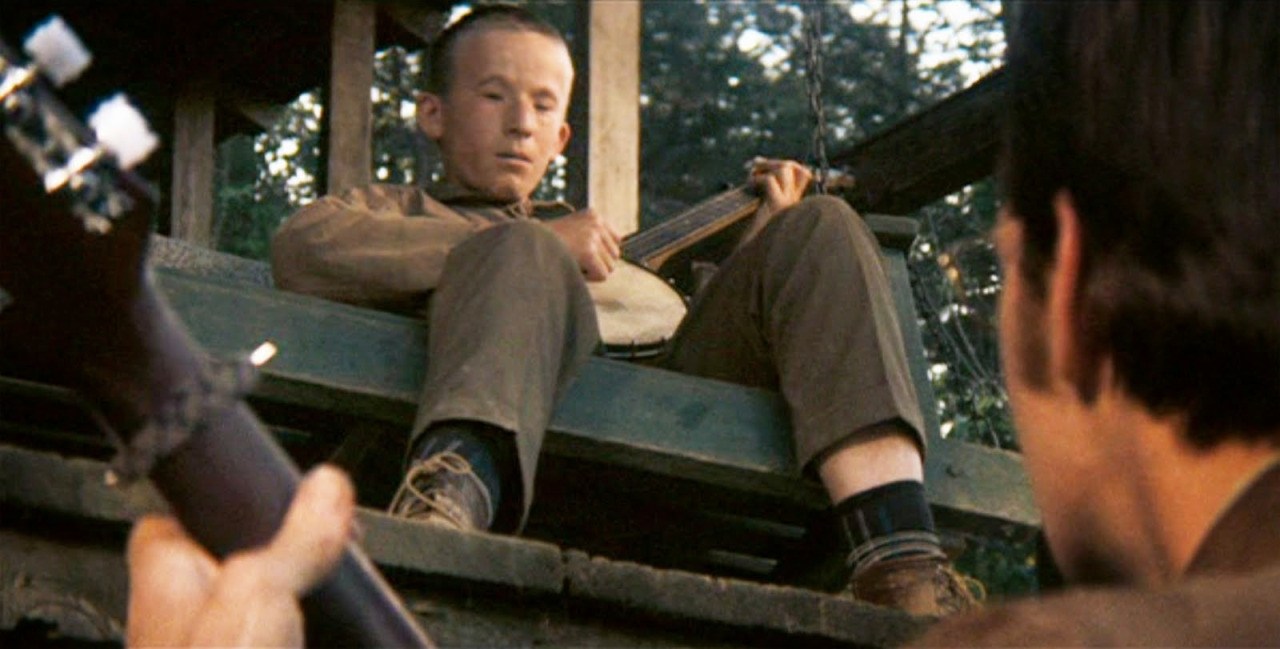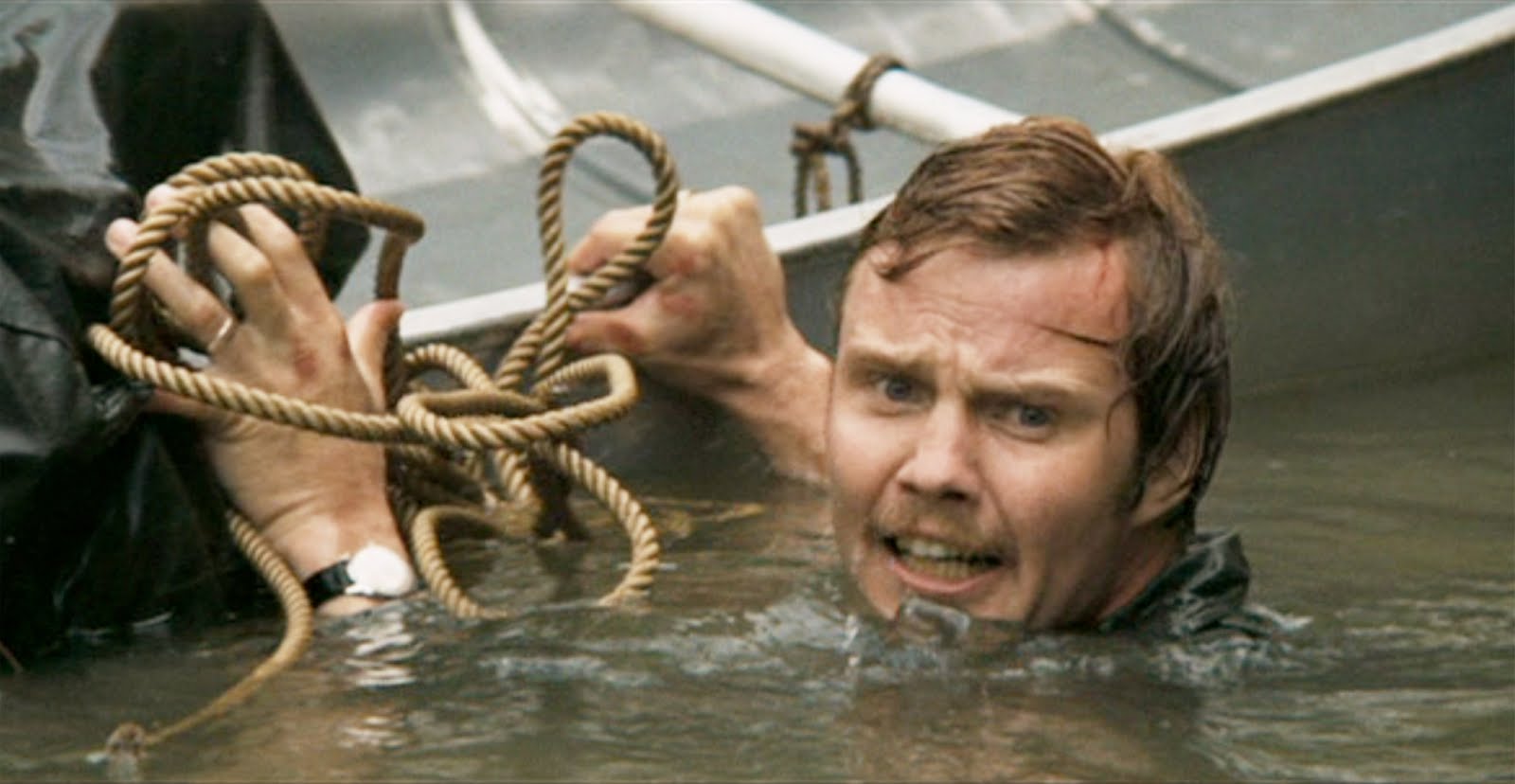
“[Deliverance] is the best film I’ve ever done. It’s a picture that just picks you up and sends you crashing against the rocks. You feel everything and just crawl out of the theater.”
– Burt Reynolds
Men without women
Savagely compelled to defend themselves as the laws and measures of civilization no longer affect or protect them, Deliverance is an uncomfortable but engaging portrait of men out of their environment.
Based off of poet-novelist James Dickey’s 1970 novel of the same name (Dickey wrote the screenplay and won a Golden Globe for his efforts), English filmmaker John Boorman (Point Blank) amps up the alarms and anxieties as the film deals with sympathetic and self-righteous middle-class men who must face, amongst other vicissitude, exceedingly sexualized violence in the boondocks of Georgia.
Removed from civilization along the Cahulawassee River, these men will make some self-discovery they’ll never be able to retreat from in a journey both breathtaking and brutal.
“He got a real pretty mouth ain’t he?”
– Toothless Man (played by Herbert ‘Cowboy’ Coward)
Journeying into the heart of darkness

As brutal and bloodthirsty as it is nuanced and attenuated, Deliverance shares a similitude to other films of that era––such as Richard Fleischer’s See No Evil (1971), Sam Peckinpah’s Straw Dogs (1971), Wes Craven’s Last House on the Left (1972), William Fruet’s House on the Lake (1976), and Peter S. Traynor’s Death Game (1977)––where bourgeois materialistic men and/or women are suddenly at odds with hayseeds or miscreants who are, at first, tossed only a few crumbs and heavily patronized. But Deliverance, unlike many of those films and the many imitators to follow, is both muscular and mysterious, too.
The film begins with four men from the city looking to relax and do some exploring in a boy-scouts’ delight. Lewis (Burt Reynolds) the survivalist, Ed (Jon Voight) the quiet one, Bobby (Ned Beatty) who is plain-spoken, and Drew (Ronny Cox) who is both perceptive and sensitive. They could have just gone golfing but opted for the more courageous and masculine undertaking of the downriver canoe trip in dense woodland that’s soon to be demoed by a dam that will turn it all into a lake.
The first day of their getaway is unspoiled and idyllic but on the second day Bobby and Ed, having gone on ahead in their canoe, are accosted by two redneck hillbillies (Herbert Coward and Bill McKinney) with very bad dental hygiene, let’s put it that way.
This is where the horrors really begin as Ed is tied to a tree and Bobby is shit-kicked, raped, and humiliated––the mountain men get him to “squeal like a pig” amongst other indignities. Just as the nasty pair turn their attentions to Ed, Lewis muscles in with his archery skills, killing the rapist with an arrow as Drew chases the other hillbilly into the brush.
Now our protagonists, with conflicting emotions and deeply alloyed feelings, bury the body, opting to smoke-screen the whole horrific incident. The four men, gravely shaken, hunger for home, but are now matched against the surviving villain, incidentally one hell of a rifleman, and in a landscape no longer so lush and teeming as it is malicious and terrifying.
“Certainly, Deliverance would be impossible to make today. You’d have to have a risk-assessment officer on hand at all times. All we had was a diver with us. And he did have to go into the river and pull people out. One day Ned Beatty went down and he didn’t come up. He was gone, I don’t know, maybe two minutes or so. I always had the fear I was going to lose one of the cast.”
– John Boorman
All the light we cannot see

Questioning what it is that heroism means at every step, Boorman offers up a breathtaking quest through whitewater with shattering images of natural beauty and brilliance.
Aided by his wonderful cinematographer Vilmos Zsigmond, and his talented editor Tom Priestley (who along with Boorman received an Oscar nomination for his efforts), Deliverance is in no way the atypical virile man actioner. The filmmakers here took the decidedly more disturbing approach, creating an uncomfortable film with immediacy and aversion that is compelling to the core.
Of course one of the most famed sequences of the film has got to be the “feudin’ banjos” sequence between actors Ronny Cox and Billy Redden. Shortly before the momentum of the film gets unrelenting there’s a brief bit of ominous foreshadowing as our four heroes encounter Lonnie (Redden), a mentally challenged, inbred manchild who just so happens to be an extraordinarily gifted musician (though for the scene the actual playing of the banjo was done by Mike Addis).
Drew and Lonnie’s eerie yet lovely musical showdown led to a lawsuit from the song’s writer, Arthur “Guitar Boogie” Smith, as it was used in the film without permission.
Runner-up to the “Duelling Banjos” is the horror twist at the end of Deliverance, an oft-duplicated last-minute dip into shock cinema––most famously duplicated in Brian De Palma’s Carrie (1976)––which shows at water-level a hand suddenly burst from the depths before we crash cut to Ed, jolted awake in bed, his dreams deeply and indefinitely disturbed.
“Night has fallen. And there’s nothin’ we can do about it.”
– Ed Gentry (played by Jon Voight)
All things this way

On the surface, Deliverance is a brilliant psychological shocker, and the depths underneath are deep-seated and maybe even unfathomable. To say it’s a film about man versus nature is to dumb it down far too much, and the same must be said if we’re to ascribe it as a cautionary tale of city boys squaring off against hindered hicks. These men and their waking nightmare cannot be reduced to sheer cliché.
Inexolorably, these pained events take their march and there is little luxury in elucidation. Lewis, perhaps the alpha male the bunch, certainly the most able-bodied of the lot, is soon sidelined with an injury and this gives Reynold’s a solid opportunity to rethink and reassess his famed heroic persona.
Much to his credit, Reynold’s offers a graciously self-critical turn, certainly one of his best ever performances. Voight’s pensive, pipe-smoking and sorry-eyed Ed, who unwillingly kills in self-defense in order to survive, is also wounded, but deep inside.
As the film concludes the survivors arrive at asylum, of sorts, though they may be safe, peace of mind will forever elude them, and their nightmares will never cease.
Author Bio: Shane Scott-Travis is a film critic, screenwriter, comic book author/illustrator and cineaste. Currently residing in Vancouver, Canada, Shane can often be found at the cinema, the dog park, or off in a corner someplace, paraphrasing Groucho Marx. Follow Shane on Twitter @ShaneScottravis.